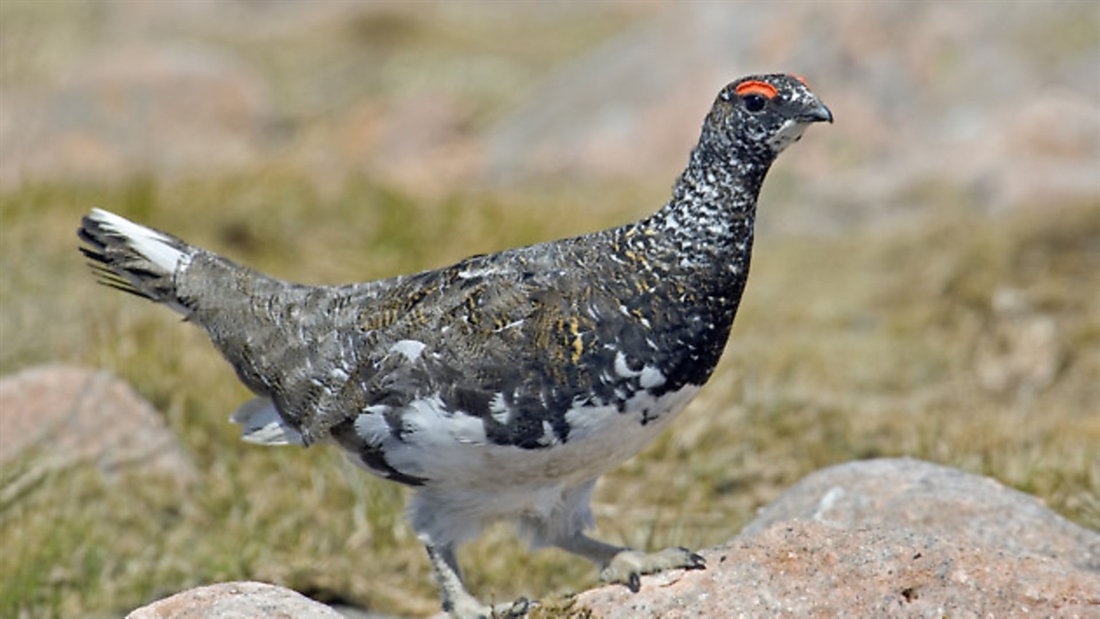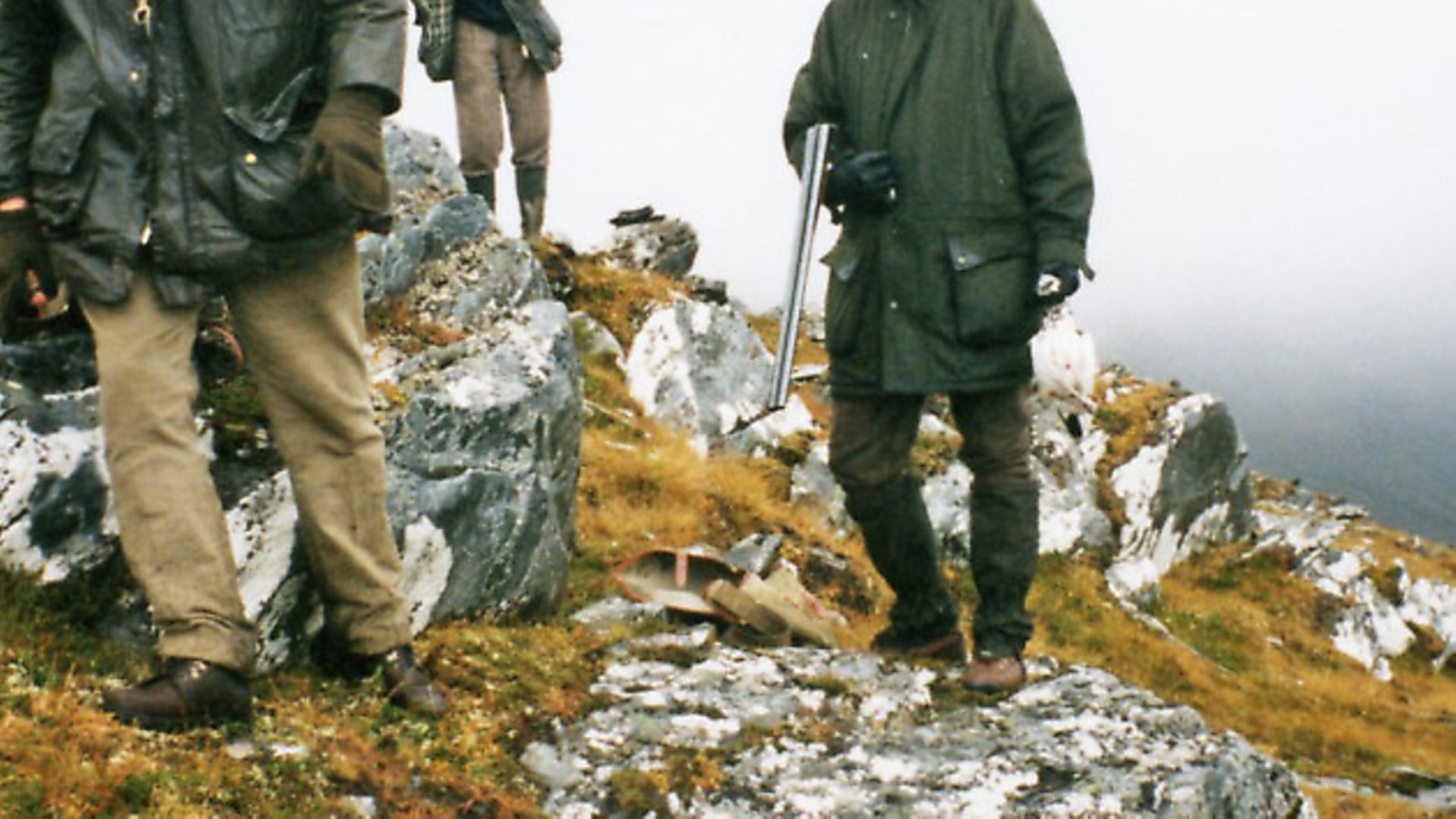Ptarmigan hunting in Scotland

Lagopus Mutus, the rock ptarmigan, presents some of the most challenging shooting in Britain. Robin Rolfe explains why
When the sun burns low and the ice creeps further across the earth the ptarmigan will be the last bird alive.” Thus dictates a knowing scribe. For the last two score years and ten I have hunted this delightful cousin of the red grouse and have come to respect the little game bird more than any other.
Not only do they survive but they thrive in probably the harshest climate to be found in the British Isles; namely the highest peaks of the Scottish Highlands. Only once did I come across a covey below 1000 feet. This was after a particularly bad snow storm on Ben Wyvis where the snow was knee-deep, thus rendering their food hard to find despite their habit of burrowing into drifts for sustenance. Natural predators of game shun these high inhospitable places, save the eagle and occasional buzzard and opportunist peregrine falcon – or even the hooded crow in springtime. A travelling hill fox will never pass up a tasty meal of eggs during the breeding season.
The ptarmigan, to a large degree, owes its survival to its quite remarkable camouflage irrespective of season. In fact one could almost say it was almost continually moulting as the seasons progress, from a pure white in winter to a mottled grey in summer. Notwithstanding lagopus mutus to a large degree owes its winter survival to a continual covering of snow on the high tops when its plumage is pristine white, thus rendering it very vulnerable to a hungry predator, especially the golden eagle.
Shooting
Thankfully the modern Gun is usually content with a brace or two, and does not try to emulate the Hon. Geoffrey Hill who shot, to his own gun in one day, 122 ptarmigan. Mind you this was in 1866 when the countryside was crawling with gamekeepers and any bird with a hooked bill was vermin and suffered accordingly.
On occasions I have heard scorn directed at ptarmigan shooters, derided as shooting half-tame game as an easy target. May I respectfully suggest these persons have yet to head for the high ground. In my experience I have seen more of this little white bird missed than any other game bird. Most of the shooting is done after the stag season, for obvious reasons, so in reality the season is a short one from October 21st to December 10th. Nevertheless, by then both sexes are in their pristine winter plumage of almost pure white except a broad black band through the ‘lores’, a narrow line over and under the eye and a broad black patch behind eye. This occurs only in the male.
Shooting pressure has no effect on ptarmigan numbers. Without doubt this is due mainly to the sheer inaccessibility of the bird to all but the most dedicated and fit of sportsmen. A brace or two is a good day even for the super fit hunters. I reckon that hunting the ptarmigan could be regarded the most dangerous fieldsport in Britain. Not only does one have the most sudden and dramatic change in the weather to contend with, but wet and sometimes unstable rock can cause unexpected falls and the resulting sprained and broken limbs to contend with. I record this with a degree of experience!
Nevertheless the most hazardous time to be in ptarmigan country is if the mist comes swirling over. When this happens shooting must immediately be aborted and the hill descended unless an improvement in the weather is thought to be likely by the guide. The inference is obvious when moving in jumbled rocks and crags. I would only hunt with a maximum of four Guns, yet they can disappear into the murk so quickly to fire a shot into the grey blanket is courting disaster.
I am not an expert in ballistics; we all have our favourite weapon and load. My choice, for what it’s worth, is a normal game gun with pretty open chokes. Should you be fortunate enough to own a selection of shotguns then I would suggest you take the least valuable on your foray on the high tops. Granite can make a real mess of an exquisite piece of walnut, not to mention the dent it can put in a barrel. Once I had the pleasure of guiding a delightful French couple on a ptarmigan hunt. Imagine my horror as I watched him pull one of Messrs Purdeys best from an immaculate leather sleeve. I’m sure he saw the expression on my face and exclaimed with a chuckle “Don’t worry I’ve got the other one at home”.
‘What cartridges shall I use?’ An oft-asked question on going ptarmigan shooting. I would suggest a number six or seven so there is a fairly wide choice – even clay pigeon ammo is not uncommon.
Now dogs. Certainly a retriever is essential – a winged bird can disappear like magic even on a bare rock face or snow, but I have found a wounded bird to seek concealment in a deep fissure in the rocks and it can be the very devil to secure.
Nevertheless, the jury is out where pointing dogs are concerned. I am not convinced they are right for the high tops as they can so easily disappear into a swirling mist or a tumble of rocks where they can be on point yet invisible.
Being clad for the wild elements is essential for the high tops at any time of the year. My choice is a 22 ounce tweed – if wool is good enough for a mountain sheep it’s good enough for me. It can be heavy when wet but it retains its warmth. Having said that, the modern fabrics are excellent.
Footwear again is a matter of personal choice with so many types on the market. Mind you I always remained loyal to the old sprung-last hide hill boot with a Commando sole.
Who ever invented the Mars Bar should be knighted, for it is a life-saver on the hill for man and dog. However never replace a half chewed one in you pocket without covering the end for it will collect any amount of unimaginable detritus from a well used pocket.
By Robin Rolfe.






